Biology GK Compilation From NEET Exam 2018:
1. The difference between spermiogenesis and spermiation is
(A) In spermiogenesis spermatids are formed, while in spermiation spermatozoa are formed.
(B) In spermiogenesis spermatozoa are formed, while in spermiation spermatids are formed.
(C) In spermiogenesis spermatozoa are formed, while in spermiation spermatozoa are released from Sertoli cells into the cavity of seminiferous tubules.
(D) In spermiogenesis spermatozoa from Sertoli cells are released into the cavity of seminiferous tubules, while in spermiation spermatozoa are formed.
Ans: In spermiogenesis spermatozoa are formed, while in spermiation spermatozoa are released from sertoli cells into the cavity of seminiferous tubules (C)
2. The amnion of the mammalian embryo is derived from
(A) ectoderm and mesoderm
(B) endoderm and mesoderm
(C) ectoderm and endoderm
(D) mesoderm and trophoblast
Ans: ectoderm and mesoderm (A)
3. The contraceptive ‘SAHELI’
(A) blocks estrogen receptors in the uterus, preventing eggs from getting implanted.
(B) increases the concentration of estrogen and prevents ovulation in females.
(C) is a post-coital contraceptive.
(D) is an IUD.
Ans: blocks estrogen receptors in the uterus, preventing eggs from getting implanted (A)
4. Hormones secreted by the placenta to maintain pregnancy are
(A) hCG, hPL, progestogens, prolactin
(B) hCG, hPL, estrogens, relaxin, oxytocin
(C) hCG, progestogens, estrogens, glucocorticoids
(D) hCG, hPL, progestogens, estrogens
Ans: hCG, hPL, progestogens, estrogens (D)
5. Match the items given in Column I with those in Column II and select the correct option given below :
| Column I | Column II |
|---|---|
| a. Proliferative Phase | i. Breakdown of endometrial lining |
| b. Secretory Phase | ii. Follicular Phase |
| c. Menstruation | iii. Luteal Phase |
| a | b | c | |
| (A) | iii | ii | i |
| (B) | i | iii | ii |
| (C) | iii | i | ii |
| (D) | ii | iii | i |
Ans: (D)
6. All of the following are part of an operon except
(A) an operator
(B) structural genes
(C) a promoter
(D) an enhancer
Ans: an enhancer (D)
7. A woman has an X-linked condition on one of her X chromosomes. This chromosome can be inherited by
(A) Only daughters
(B) Only sons
(C) Both sons and daughters
(D) Only grandchildren
Ans: Both sons and daughters (C)
8. According to Hugo de Vries, the mechanism of evolution is
(A) Multiple step mutations
(B) Saltation
(C) Minor mutations
(D) Phenotypic variations
Ans: Saltation (B)
9. AGGTATCGCAT is a sequence from the coding strand of a gene. What will be the corresponding sequence of the transcribed mRNA?
(A) AGGUAUCGCAU
(B) UGGTUTCGCAT
(C) UCCAUAGCGUA
(D) ACCUAUGCGAU
Ans: AGGUAUCGCAU (A)
10. Among the following sets of examples for divergent evolution, select the incorrect option :
(A) Forelimbs of man, bat and cheetah
(B) Heart of bat, man and cheetah
(C) Eye of octopus, bat and man
(D) Brain of bat, man and cheetah
Ans: Eye of octopus, bat and man (C)
11. Conversion of milk to curd improves its nutritional value by increasing the amount of
(A) Vitamin D
(B) Vitamin A
(C) Vitamin E
(D) Vitamin B12
Ans: Vitamin B12 (D)
12. Which of the following is not an autoimmune disease?
(A) Psoriasis
(B) Rheumatoid arthritis
(C) Vitiligo
(D) Alzheimer’s disease
Ans: Alzheimer’s disease (D)
13. Cells in G0 phase
(A) enter the cell cycle
(B) suspend the cell cycle
(C) terminate the cell cycle
(D) exit the cell cycle
Ans: exit the cell cycle (D)
14. The similarity of bone structure in the forelimbs of many vertebrates is an example of
(A) Homology
(B) Analogy
(C) Adaptive radiation
(D) Convergent evolution
Ans: Homology (A)
15. Which of the following characteristics represent ‘Inheritance of blood groups’ in humans?
a. Dominance
b. Co-dominance
c. Multiple allele
d. Incomplete dominance
e. Polygenic inheritance
(A) b, c and e
(B) a, b and c
(C) a, c and e
(D) b, d and e
Ans: a, b and c (B)
16. In which disease does mosquito transmitted pathogen cause chronic inflammation of lymphatic vessels?
(A) Elephantiasis
(B) Ascariasis
(C) Amoebiasis
(D) Ringworm disease
Ans: Elephantiasis (A)
17. All of the following are included in ‘ex-situ conservation’ except
(A) Wildlife safari parks
(B) Sacred groves
(C) Seed banks
(D) Botanical gardens
Ans: Sacred groves (B)
18. Which part of the poppy plant is used to obtain the drug “Smack”?
(A) Flowers
(B) Latex
(C) Leaves
(D) Roots
Ans: Latex (B)
19. In a growing population of a country,
(1) pre-reproductive individuals are more than reproductive individuals.
(2) reproductive individuals are less than post-reproductive individuals.
(3) pre-reproductive individuals are less than reproductive individuals.
(4) reproductive and pre-reproductive individuals are equal in number.
Ans: pre-reproductive individuals are more than reproductive individuals (A)
20. Which one of the following population interactions is widely used in medical science for the production of antibiotics?
(A) Commensalism
(B) Mutualism
(C) Amensalism
(D) Parasitism
Ans: Amensalism (C)
21. Match the items given in Column I with those in Column II and select the correct option given below :
| Column-I | Column-II |
|---|---|
| a. Eutrophication | i. UV-B radiation |
| b. Sanitary landfill | ii. Deforestation |
| c. Snow blindness | iii. Nutrient enrichment |
| d. Jhum cultivation | iv. Waste disposal |
| a | b | c | d | |
| (A) | ii | i | iii | iv |
| (B) | i | iii | iv | ii |
| (C) | i | ii | iv | iii |
| (D) | iii | iv | i | ii |
Ans: (D)
22. Which of the following options correctly represents the lung conditions in asthma and emphysema, respectively?
(A) Inflammation of bronchioles; Decreased respiratory surface
(B) Increased number of bronchioles; Increased respiratory surface
(C) Decreased respiratory surface; Inflammation of bronchioles
(D) Increased respiratory surface; Inflammation of bronchioles
Ans: Inflammation of bronchioles; Decreased respiratory surface (A)
23. Match the items given in Column I with those in Column II and select the correct option given below:
| Column I | Column II |
|---|---|
| a. Tricuspid valve | i. Between left atrium and left ventricle |
| b. Bicuspid valve | ii. Between right ventricle and pulmonary artery |
| c. Semilunar valve | iii.Between right atrium and right ventricle |
| a | b | c | |
| (A) | iii | i | ii |
| (B) | i | iii | ii |
| (C) | ii | i | iii |
| (D) | i | ii | iii |
Ans: (A)
24. Match the items given in Column I with those in Column II and select the correct option given below:
| Column I | Column II |
|---|---|
| a. Tidal volume | i. 2500 – 3000 mL |
| b. Inspiratory Reserve volume | ii. 1100 – 1200 mL |
| c. Expiratory Reserve volume | iii. 500 – 550 mL |
| d. Residual volume | iv. 1000 – 1100 mL |
| a | b | c | d | |
| (A) | iii | ii | i | iv |
| (B) | iii | i | iv | ii |
| (C) | iv | iii | ii | i |
| (D) | i | iv | ii | iii |
Ans: (B)
25. Which of the following is an amino acid derived hormone?
(A) Epinephrine
(B) Ecdysone
(C) Estriol
(D) Estradiol
Ans: Epinephrine (A)
26. The transparent lens in the human eye is held in its place by
(A) ligaments attached to the ciliary body
(B) ligaments attached to the iris
(C) smooth muscles attached to the ciliary body
(D) smooth muscles attached to the iris
Ans: ligaments attached to the ciliary body (A)
27. Which of the following hormones can play a significant role in osteoporosis?
(A) Aldosterone and Prolactin
(B) Progesterone and Aldosterone
(C) Parathyroid hormone and Prolactin
(D) Estrogen and Parathyroid hormone
Ans: Estrogen and Parathyroid hormone (D)
28. Which of the following gastric cells indirectly help in erythropoiesis?
(A) Chief cells
(B) Mucous cells
(C) Parietal cells
(D) Goblet cells
Ans: Parietal cells (C)
29. Which of the following structures or regions is incorrectly paired with its functions?
(A) Medulla oblongata : controls respiration and cardiovascular reflexes
(B) Limbic system: consists of fibre tracts that interconnect different regions of brain; controls movement
(C) Corpus callosum : band of fibers connecting left and right cerebral hemispheres
(D) Hypothalamus: production of releasing hormones and regulation of temperature, hunger and thirst
Ans: Limbic system: consists of fibre tracts that interconnect different regions of brain; controls movement (B)
30. Match the items given in Column I with those in Column II and select the correct option given below:
| Column I | Column II |
|---|---|
| a. Fibrinogen | (i) Osmotic balance |
| b. Globulin | (ii) Blood clotting |
| c. Albumin | (iii) Defence mechanism |
| a | b | c | |
| (A) | (iii) | (ii) | (i) |
| (B) | (i) | (ii) | (iii) |
| (C) | (ii) | (iii) | (i) |
| (D) | (i) | (iii) | (ii) |
Ans: (C)
31. Which of the following is an occupational respiratory disorder?
(A) Anthracis
(B) Silicosis
(C) Emphysema
(D) Botulism
Ans: Silicosis (B)
32. Calcium is important in skeletal muscle contraction because it
(A) Binds to troponin to remove the masking of active sites on actin for myosin
(B) Activates the myosin ATPase by binding to it
(C) Prevents the formation of bonds between the myosin cross bridges and the actin filament
(D) Detaches the myosin head from the actin filament
Ans: Binds to troponin to remove the masking of active sites on actin for myosin (A)
33. Select the incorrect match:
(A) Lampbrush chromosomes– Diplotene bivalents
(B) Allosomes– Sex chromosomes
(C) Polytene chromosomes– Oocytes of amphibians
(D) Submetacentric chromosomes– L-shaped chromosomes
Ans: Polytene chromosomes– Oocytes of amphibians (C)
34. Nissl bodies are mainly composed of
(A) Proteins and lipids
(B) DNA and RNA
(C) Free ribosomes and RER
(D) Nucleic acids and SER
Ans: Free ribosomes and RER (C)
35. Which of these statements is incorrect?
(A) Enzymes of TCA cycle are present in mitochondrial matrix
(B) Glycolysis occurs in cytosol
(C) Oxidative phosphorylation takes place in outer mitochondrial membrane
(D) Glycolysis operates as long as it is supplied with NAD that can pick up hydrogen atoms
Ans: Oxidative phosphorylation takes place in outer mitochondrial membrane (C)
36. Which of the following events does not occur in rough endoplasmic reticulum?
(A) Protein folding
(B) Protein glycosylation
(C) Phospholipid synthesis
(D) Cleavage of signal peptide
Ans: Phospholipid synthesis (C)
37. Many ribosomes may associate with a single mRNA to form multiple copies of a polypeptide simultaneously. Such strings of ribosomes are termed as
(A) Polysome
(B) Polyhedral bodies
(C) Nucleosome
(D) Plastidome
Ans: Polysome (A)
38. Which of the following terms describe human dentition?
(A) Thecodont, Diphyodont, Homodont
(B) Thecodont, Diphyodont, Heterodont
(C) Pleurodont, Diphyodont, Heterodont
(D) Pleurodont, Monophyodont, Homodont
Ans: Thecodont, Diphyodont, Heterodont (B)
39. Identify the vertebrate group of animal characterized by crop and gizzard in its digestive system
(A) Amphibia
(B) Reptilia
(C) Osteichthyes
(D) Aves
Ans: Aves (D)
40. Which one of these animals is not a homeotherm?
(A) Macropus
(B) Chelone
(C) Psittacula
(D) Camelus
Ans: Chelone (B)
41. Which of the following features is used to identify a male cockroach from a female cockroach?
(A) Presence of a boat shaped sternum on the 9th abdominal segment
(B) Presence of caudal styles
(C) Presence of anal cerci
(D) Forewings with darker tegmina
Ans: Presence of caudal styles (B)
42. Which of the following organisms are known as chief producers in the oceans?
(A) Dinoflagellates
(B) Diatoms
(C) Euglenoids
(D) Cyanobacteria
Ans: Diatoms (B)
43. Ciliates differ from all other protozoans in
(A) using flagella for locomotion
(B) having a contractile vacuole for removing excess water
(C) having two types of nuclei
(D) using pseudopodia for capturing prey
Ans: having two types of nuclei (C)
44. Which of the following animals does not undergo metamorphosis?
(A) Earthworm
(B) Tunicate
(C) Starfish
(D) Moth
Ans: Earthworm (A)
45. What is the role of NAD+ in cellular respiration?
(A) It functions as an enzyme
(B) It functions as an electron carrier
(C) It is the final electron acceptor for anaerobic respiration
(D) It is a nucleotide source for ATP synthesis
Ans: It functions as an electron carrier (B)
46. Which one of the following plants shows a very close relationship with a species of moth, where none of the two can complete its life cycle without the other?
(A) Hydrilla
(B) Yucca
(C) Viola
(D) Banana
Ans: Yucca (B)
47. Oxygen is not produced during photosynthesis by
(A) Green sulphur bacteria
(B) Nostoc
(C) Chara
(D) Cycas
Ans: Green sulphur bacteria (A)
48. Double fertilization is
(A) Fusion of two male gametes of a pollen tube with two different eggs
(B) Fusion of one male gamete with two polar nuclei
(C) Syngamy and triple fusion
(D) Fusion of two male gametes with one egg
Ans: Syngamy and triple fusion (C)
49. Which of the following elements is responsible for maintaining turgor in cells?
(A) Magnesium
(B) Sodium
(C) Calcium
(D) Potassium
Ans: Potassium (D)
50. Pollen grains can be stored for several years in liquid nitrogen having a temperature of
(A) –120°C
(B) –80°C
(C) –160°C
(D) –196°C
Ans: –196°C (D)
51. Which among the following is not a prokaryote?
(A) Saccharomyces
(B) Mycobacterium
(C) Oscillatoria
(D) Nostoc
Ans: Saccharomyces (A)
52. The two functional groups characteristic of sugars are
(A) Hydroxyl and methyl
(B) Carbonyl and methyl
(C) Carbonyl and hydroxyl
(D) Carbonyl and phosphate
Ans: Carbonyl and hydroxyl (C)
53. Which of the following is not a product of light reaction of photosynthesis?
(A) ATP
(B) NADH
(C) Oxygen
(D) NADPH
Ans: NADH (B)
54. Stomatal movement is not affected by
(A) Temperature
(B) Light
(C) CO2 concentration
(D) O2 concentration
Ans: O2 concentration (D)
55. The Golgi complex participates in
(A) Fatty acid breakdown
(B) Formation of secretory vesicles
(C) Activation of amino acid
(D) Respiration in bacteria
Ans: Formation of secretory vesicles (B)
56. Which of the following is true for nucleolus?
(A) Larger nucleoli are present in dividing cells
(B) It is a membrane-bound structure
(C) It is a site for active ribosomal RNA synthesis
(D) It takes part in spindle formation
Ans: It is a site for active ribosomal RNA synthesis (C)
57. Match the items given in Column I with those in Column II and select the correct option given below:
| Column I (Function) | Column II (Part of Excretory system) |
|---|---|
| a. Ultrafiltration | i. Henle’s loop |
| b. Concentration of urine | ii. Ureter |
| c. Transport of urine | iii. Urinary bladder |
| d. Storage of urine | iv. Malpighian corpuscle |
| v. Proximal convoluted tubule |
| a | b | c | d | |
| (A) | iv | v | ii | iii |
| (B) | iv | i | ii | iii |
| (C) | v | iv | i | iii |
| (D) | v | iv | i | ii |
Ans: (B)
58. Match the items given in Column I with those in Column II and select the correct option given below:
| Column I | Column II |
|---|---|
| a. Glycosuria | i. Accumulation of uric acid in joints |
| b. Gout | ii. Mass of crystallised salts within the kidney |
| c. Renal calculi | iii. Inflammation in glomeruli |
| d. Glomerular nephritis | iv. Presence of glucose in urine |
| a | b | c | d | |
| (A) | iii | ii | iv | i |
| (B) | i | ii | iii | iv |
| (C) | iv | i | ii | iii |
| (D) | ii | iii | i | iv |
Ans: (C)
59. Stomata in grass leaf are
(A) Dumb-bell shaped
(B) Kidney shaped
(C) Barrel shaped
(D) Rectangular
Ans: Dumb-bell shaped (A)
60. A ‘new’ variety of rice was patented by a foreign company, though such varieties have been present in India for a long time. This is related to
(A) Co-667
(B) Sharbati Sonora
(C) Basmati
(D) Lerma Rojo
Ans: Basmati (C)
61. Select the correct match
(A) Ribozyme- Nucleic acid
(B) F2 × Recessive parent- Dihybrid cross
(C) G. Mendel- Transformation
(D) T.H. Morgan- Transduction
Ans: Ribozyme- Nucleic acid (A)
62. The correct order of steps in Polymerase Chain Reaction (PCR) is
(A) Extension, Denaturation, Annealing
(B) Annealing, Extension, Denaturation
(C) Denaturation, Annealing, Extension
(D) Denaturation, Extension, Annealing
Ans: Denaturation, Annealing, Extension (C)
63. In India, the organisation responsible for assessing the safety of introducing genetically modified organisms for public use is
(A) Indian Council of Medical Research (ICMR)
(B) Council for Scientific and Industrial Research (CSIR)
(C) Genetic Engineering Appraisal Committee (GEAC)
(D) Research Committee on Genetic Manipulation (RCGM)
Ans: Genetic Engineering Appraisal Committee (GEAC) (C)
64. Use of bioresources by multinational companies and organisations without authorisation from the concerned country and its people is called
(A) Bio-infringement
(B) Biopiracy
(C) Bioexploitation
(D) Biodegradation
Ans: Biopiracy (B)
65. Which of the following is commonly used as a vector for introducing a DNA fragment in human lymphocytes?
(A) Retrovirus
(B) Ti plasmid
(C) pBR 322
(D) λ phage
Ans: Retrovirus (A)
66. The stage during which separation of the paired homologous chromosomes begins is
(A) Pachytene
(B) Diplotene
(C) Zygotene
(D) Diakinesis
Ans: Diplotene (B)
67. Which of the following has proved helpful in preserving pollen as fossils?
(A) Pollenkitt
(B) Cellulosic intine
(C) Sporopollenin
(D) Oil content
Ans: Sporopollenin (C)
68. The experimental proof for semiconservative replication of DNA was first shown in a
(A) Fungus
(B) Bacterium
(C) Virus
(D) Plant
Ans: Bacterium (B)
69. Which of the following pairs is wrongly matched?
(A) Starch synthesis in pea: Multiple alleles
(B) ABO blood grouping: Co-dominance
(C) T.H. Morgan: Linkage
(D) XO type sex determination: Grasshopper
Ans: Starch synthesis in pea: Multiple alleles (A)
70. Offsets are produced by
(A) Meiotic divisions
(B) Mitotic divisions
(C) Parthenogenesis
(D) Parthenocarpy
Ans: Mitotic divisions (B)
71. Select the correct statement
(A) Franklin Stahl coined the term ‘‘linkage’’
(B) Punnett square was developed by a British scientist
(C) Transduction was discovered by S. Altman
(D) Spliceosomes take part in translation
Ans: Punnett square was developed by a British scientist (B)
72. Select the correct match
(A) Alec Jeffreys- Streptococcus pneumoniae
(B) Alfred Hershey and Martha Chase- TMV
(C) Francois Jacob and Jacques Monod- Lac operon
(D) Matthew Meselson and F. Stahl- Pisum sativum
Ans: Francois Jacob and Jacques Monod- Lac operon (C)
73. Which of the following flowers only once in its life-time?
(A) Bamboo species
(B) Jackfruit
(C) Papaya
(D) Mango
Ans: Bamboo species (A)
74. Niche is
(A) all the biological factors in the organism’s environment
(B) the physical space where an organism lives
(C) the functional role played by the organism where it lives
(D) the range of temperature that the organism needs to live
Ans: the functional role played by the organism where it lives (C)
75. In stratosphere, which of the following elements acts as a catalyst in degradation of ozone and release of molecular oxygen?
(A) Carbon
(B) Cl
(C) Oxygen
(D) Fe
Ans: Cl (B)
76. Which of the following is a secondary pollutant?
(A) CO
(B) CO2
(C) O3
(D) SO2
Ans: O3 (C)
77. World Ozone Day is celebrated on
(A) 5th June
(B) 21st April
(C) 22nd April
(D) 16th September
Ans: 16th September (D)
78. Natality refers to
(A) Death rate
(B) Birth rate
(C) Number of individuals entering a habitat
(D) Number of individuals leaving the habita
Ans: Birth rate (B)
79. Winged pollen grains are present in
(A) Mustard
(B) Cycas
(C) Pinus
(D) Mango
Ans: Pinus (C)
80. After karyogamy followed by meiosis, spores are produced exogenously in
(A) Neurospora
(B) Alternaria
(C) Saccharomyces
(D) Agaricus
Ans: Agaricus (D)
81. Which one is wrongly matched?
(A) Uniflagellate gametes– Polysiphonia
(B) Biflagellate zoospores– Brown algae
(C) Unicellular organism– Chlorella
(D) Gemma cups– Marchantia
Ans: Uniflagellate gametes– Polysiphonia (D)
82. Secondary xylem and phloem in dicot stem are produced by
(A) Apical meristems
(B) Vascular cambium
(C) Axillary meristems
(D) Phellogen
Ans: Vascular cambium (B)
83. Casparian strips occur in
(A) Epidermis
(B) Pericycle
(C) Endodermis
(D) Cortex
Ans: Endodermis (C)
84. Sweet potato is a modified
(A) Stem
(B) Adventitious root
(C) Rhizome
(D) Tap root
Ans: Adventitious root (B)
85. Plants having little or no secondary growth are
(A) Grasses
(B) Deciduous angiosperms
(C) Cycads
(D) Conifers
Ans: Grasses (A)
86. Pneumatophores occur in
(A) Halophytes
(B) Free-floating hydrophytes
(C) Submerged hydrophytes
(D) Carnivorous plants
Ans: Halophytes (A)
87. Select the wrong statement:
(A) Cell wall is present in members of Fungi and Plantae
(B) Mushrooms belong to Basidiomycetes
(C) Mitochondria are the powerhouse of the cell in all kingdoms except Monera
(D) Pseudopodia are locomotory and feeding structures in Sporozoans
Ans: Pseudopodia are locomotory and feeding structures in Sporozoans (D)
88.Which of the following statements is correct?
(A) Ovules are not enclosed by ovary wall in gymnosperms
(B) Selaginella is heterosporous, while Salvinia is homosporous
(C) Stems are usually unbranched in both Cycas and Cedrus
(D) Horsetails are gymnosperms
Ans: Ovules are not enclosed by ovary wall in gymnosperms (A)
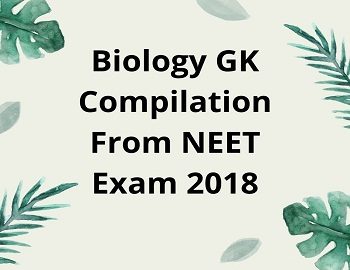


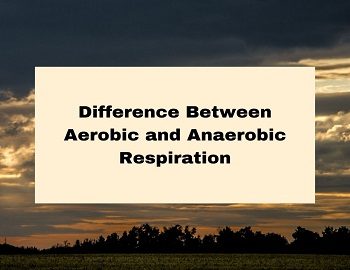
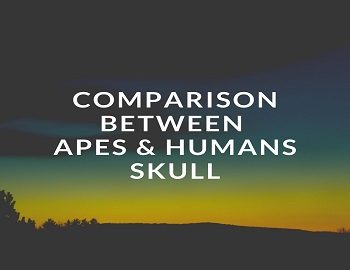
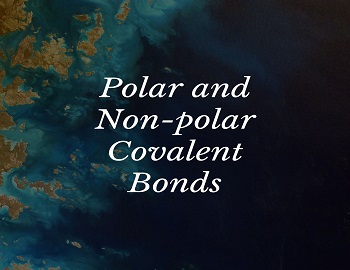


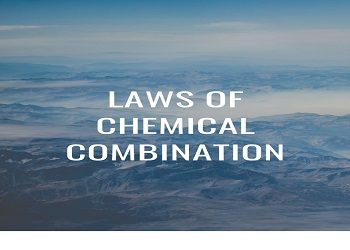
Comments (No)